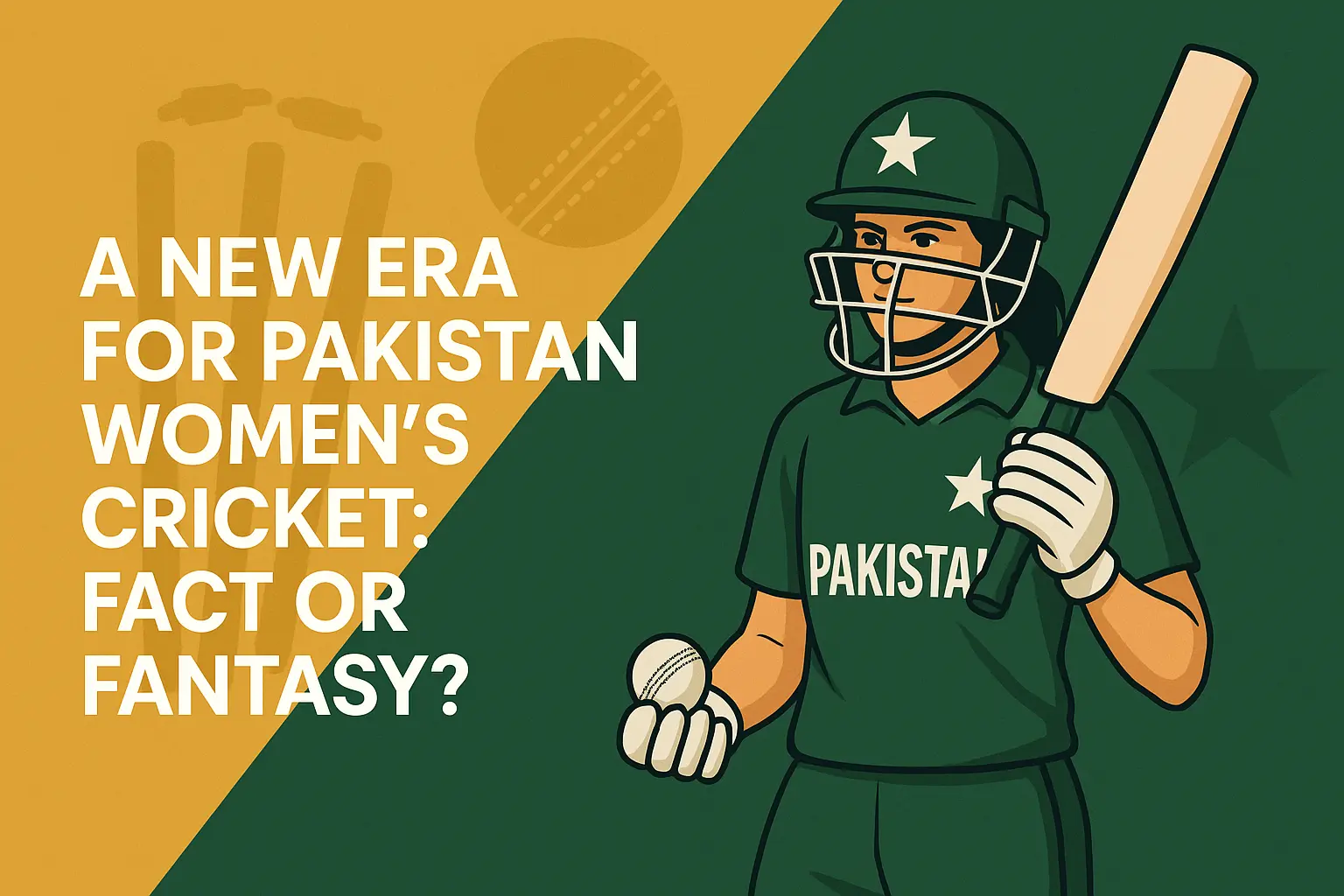Introduction
Have you noticed how the conversation around Pakistan women’s cricket is finally starting to shift? From silence and stereotypes to pride and recognition — something is happening. But is it a genuine revolution or just another fleeting moment that will pass away?
Let’s take a deep dive into this fascinating transformation and find out if this truly is a new era for Pakistan women’s cricket — or just a well-marketed fantasy.
Historical Background
Women’s cricket in Pakistan didn’t have a glamorous beginning. It was born in resistance — against tradition, societal expectations, and a lack of opportunities. In the 1990s, women playing cricket in Pakistan wasn’t just rare; it was almost taboo. The trailblazers faced criticism, mockery, and even threats.
Yet, they played. And because of them, we’re having this conversation today.
Key Milestones Over the Years
First International Appearance
Pakistan’s women’s team made its international debut in 1997. That team didn’t just play; they inspired. Despite heavy losses, the message was clear: Pakistani women can and will play cricket on the world stage.
Notable Wins
In 2010, Pakistan women won the gold medal at the Asian Games. This was a turning point — not just a victory, but validation. Since then, wins have been modest, but the passion has continued to grow.

The Role of PCB (Pakistan Cricket Board)
The Pakistan Cricket Board was once accused of neglecting women’s cricket. But in recent years, it has taken visible steps to uplift the game. Some highlights include:
- Central contracts for women cricketers
- Investment in domestic women’s cricket
- Hosting women’s tournaments with TV coverage
While there’s still a long way to go, the PCB’s role has evolved from passive to active.
Rise in Popularity
Remember when women’s matches barely got any coverage? Now, even social media trends celebrate the achievements of female cricketers.
Media and Fan Engagement
Cricket fans in Pakistan, especially the younger generation, are becoming more accepting — and excited — about the women’s team.
Social Media Buzz
Platforms like Instagram and Twitter have transformed players into role models, enabling them to connect directly with fans and build a loyal following.
Notable Female Cricketers Leading the Change
Bismah Maroof
She returned to captain the side after motherhood and became a symbol of resilience. Her leadership continues to inspire millions.
Nida Dar
Known as “Lady Boom Boom,” Nida has established her name in international leagues, representing aggression, ambition, and style.
Aliya Riaz & Emerging Stars
With players like Fatima Sana and Ayesha Naseem, the bench strength is growing, and so is the belief.
Development at the Grassroots Level
Grassroots programs are the lifeblood of any sport. The PCB has launched school tournaments and talent hunts, but the reach is still limited, especially in rural areas.
More scholarships, talent camps, and scouting programs are needed to ensure that no future star goes unnoticed.
Foreign Leagues and International Exposure
Cricketers like Nida Dar participating in leagues like the WBBL (Women’s Big Bash League) isn’t just about exposure — it’s about evolution.
These leagues help players learn world-class standards, fitness, and match awareness — and they bring that knowledge back home.
Infrastructure and Facilities
Let’s not sugarcoat it — infrastructure still has a long way to go. While men’s teams enjoy state-of-the-art training centres, women’s cricket often gets the leftovers.
But improvements are being made: training camps, fitness facilities, and better pitches are gradually becoming available to female players.
Coaching and Support Staff
Earlier, women cricketers had to depend on part-time or underqualified coaching. But that’s changing.
Now, national and regional squads have access to qualified coaches, trainers, and physiotherapists, often with international exposure.
This is vital for serious development.
Challenges Still Holding Back Progress
While a lot has improved, many challenges remain, including:
- Cultural Barriers: Many families still discourage girls from playing sports.
- Sponsorship Issues: Corporate interest in women’s cricket remains minimal.
- Media Coverage: It’s still less than 10% of what men’s cricket receives.
Until these are addressed, the “new era” remains incomplete.
Comparison with Other Nations
India vs Pakistan
India’s women’s league (WPL) has created a revolution — one that Pakistan can learn from. Players there earn more, play more, and get more attention.
Australia and England
These nations have robust domestic circuits and player development pathways. Pakistan needs to adapt and innovate fast.
The Role of Education and Awareness
Education plays a crucial role in changing mindsets. Schools need to treat sports as a viable career for girls. Campaigns and endorsements can help bridge the societal gap.
Future Potential: Fact or Fantasy?
So, is this a fundamental shift or a temporary spike?
The signs are promising — rising stars, media buzz, and better support. But without consistent investment and societal change, it risks becoming another forgotten chapter.
Let’s be hopeful — but let’s also be honest.
Conclusion
Pakistan women’s cricket stands at the crossroads of history. It has come a long way, but the journey isn’t over yet. With the right push, it can truly become a new era — not a fantasy, but a beautiful fact in the making.
FAQs
1. Who is the current captain of the Pakistan Women’s Cricket Team?
As of 2025, Nida Dar leads the team in white-ball cricket formats.
2. Has Pakistan ever won a women’s cricket World Cup?
No, not yet. However, the team has shown significant improvement and potential in recent tournaments.
3. What do women cricketers in Pakistan face the most significant challenges?
Cultural resistance, lack of facilities, financial constraints, and limited media exposure remain the major obstacles.
4. Are any Pakistani women cricketers playing in foreign leagues?
Yes! Cricketers like Nida Dar have played in leagues like Australia’s WBBL, gaining global exposure.
5. How can Pakistan improve its women’s cricket structure?
By investing in grassroots development, improving infrastructure, running awareness campaigns, and launching a professional domestic league like WPL in India.